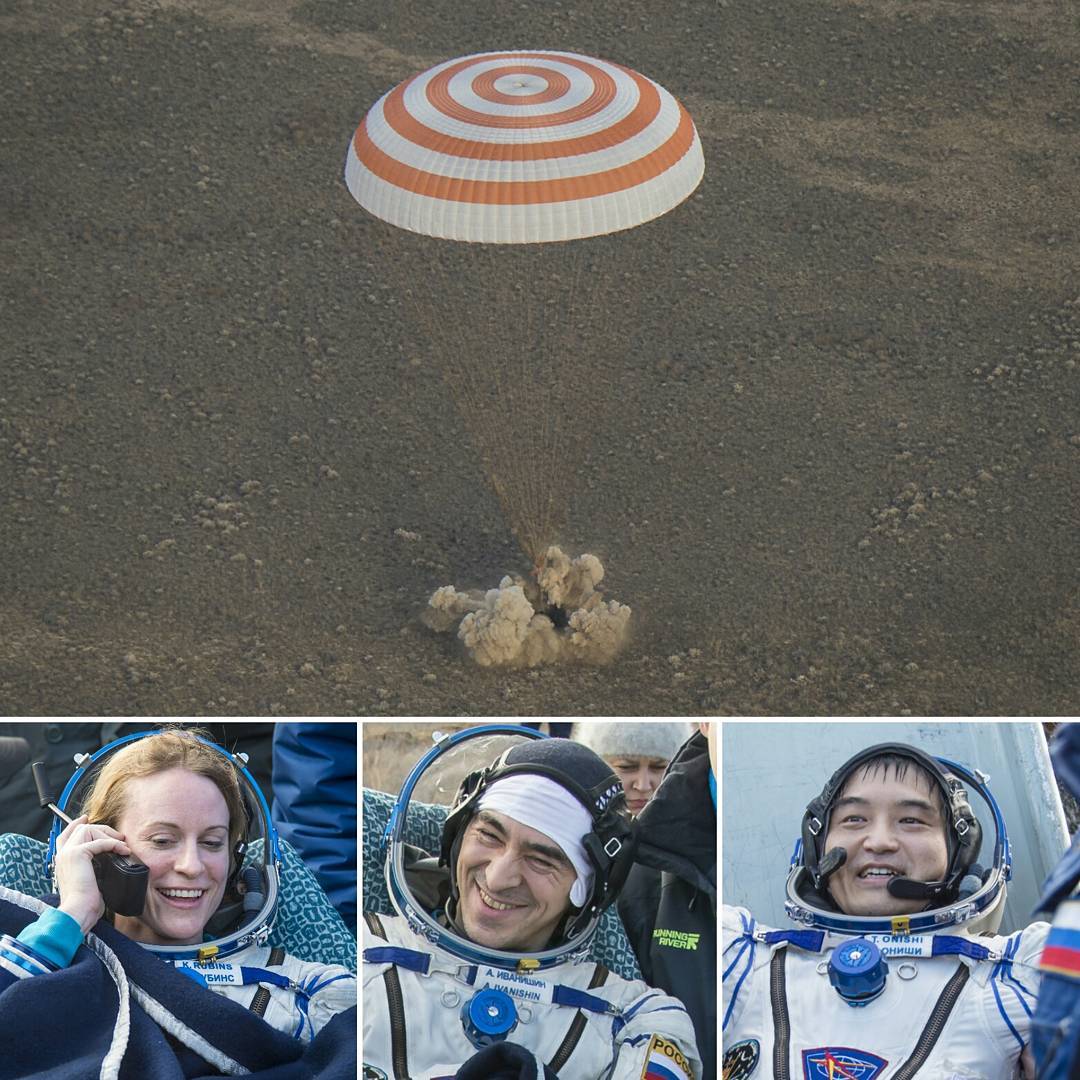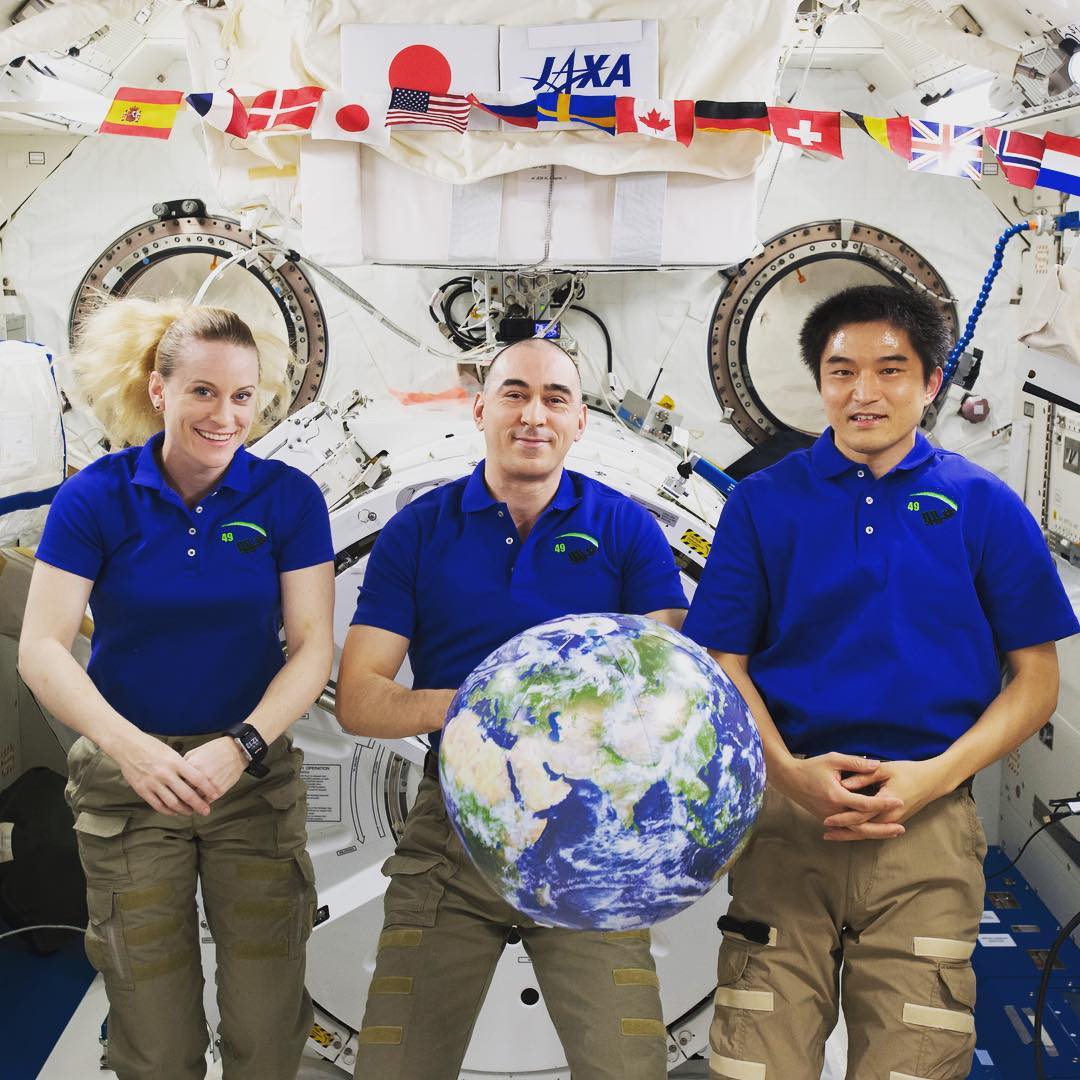The Soyuz MS-01 space capsule has landed safely on Earth after its crew completed a 115-day mission aboard the International Space Station.
Expedition 49 astronauts Kate Rubins (U.S.), Takuya Onishi (Japan), and cosmonaut Commander Anatoly Ivanishin (Russia) landed at 9:58 a.m., local time, in Kazakhstan. According to NASA, Expedition 49 crew members performed many experiments in the fields of biology, biotechnology, and physical science.

Returning to Earth after almost four months in space
The crew took flight on July 6 at the 49th expedition to the International Space Station. Rubins, an expert in molecular biology, became the first person to sequence DNA in space. This would allow astronauts to identify microbes and diagnose diseases aboard the space station, thus being able to determine if an organism poses a threat to the flight crew.
Rubins also performed two spacewalks. On the first one, he installed the first international docking adapter for letting newer spacecraft, such as SpaceX’s Dragon and the Boeing Starliner, to connect to the ISS in the future. Rubins’ second spacewalk took place to install two new cameras and retract a spare thermal control radiator.

Dr. Kathleen Rubins was selected by NASA in 2009. She has a Ph.D. In Cancer Biology from Stanford University and has performed extensive research on HIV.
While NASA displays an extensive biography on Rubins, the NASA biography of Commander Ivanishin remains slightly sober and short. Anatoly Alekseyevich Ivanishin served in the Russian Air Force in the Voronezh region, flying MiG-29 jet fighters. As of July 2011, he had logged 507 hours of flying time and 180 parachute jumps. In 2005 he was appointed as a test cosmonaut.
Astronaut and cosmonaut are two different words that share a meaning. The difference is that NASA calls its spaceflight candidates astronauts, while Roscosmos calls theirs cosmonauts.
Takuya Onishi graduated from the Department of Aeronautics and Astronautics of the University of Tokyo. He was selected by Japan Aerospace Exploration Agency (JAXA) in 2009 and started training at NASA for operating the systems aboard the ISS.
Three other astronauts launched flight on October 19 to join the Expedition 49 crew. They are Shane Kimbrough from NASA, and Sergey Ryzhikov and Andrey Borisenko from Roscosmos. Kimbrough, Ryzhikov, and Borisenko remained on the International Space Station
With this latter flight, the Expedition 49 crew received over 5-thousand pounds of science and research equipment, including supplies and Orbital ATK’s Cygnus.
Cygnus is an automated cargo spacecraft developed by NASA. Its main purpose is to transport supplies to the ISS. It is meant to be complemented by SpaceX’s Dragon Cargo spacecraft for improving supply lines in space. Both are meant to be manually captured by the ISS’s robotic arm and then docked into the station.
Research aboard the ISS
The research equipment sent to Expedition 49 on Cygnus was intended to study fire in space, sleep rhythms, and a new way to measure neutrons. Most of the experiments conducted aboard the ISS by the Expedition 49 crew had an emphasis on biology.
On December, the ISS is expected to receive new lithium ion batteries for the station’s solar arrays. The remaining crew will also receive SpaceX’s commercial resupply ship and two Russian resupply missions carrying fuel, food, and research material.

The ISS has been occupied for the last 15 years since the arrival of Expedition 1 in 2000. It is the longest that humans have been present in low Earth orbit, breaking the record set by the Mir station. Astronauts from 17 different countries have visited the International Space Station. Currently, Soyuz and Dragon Cargo are the only methods for providing the ISS with new equipment.
One of the most important areas of research developed aboard the ISS is the medical aspects of space travel. When exposed to space-like conditions, the body suffers from muscle atrophy and fluid shift, mainly due to the absence of gravity, which is always present as the human body develops on Earth.
Longer spaceflights will allow for more efficient space colonization processes. Research suggests that bone loss occasioned by space flight can increase the risk of fractures when astronauts land on Earth, especially after long space flights such as the six-month interval needed to travel from and to Mars.
Because crew attendance aboard the International Space Station is limited, often there is no physician on board, leaving astronauts relying on their training for diagnosing and treating medical conditions.
At the altitude at which the ISS is located, gravity is not completely absent. Objects are in a continuous free fall that is a product of the several movement factors aboard the station. One of the research objectives is to investigate the implications of a weightless environment in evolution, particularly in plants and animals, besides humans.
Through the ISS, humans can practice for more intricate space missions directed toward the Moon and Mars. Through tests aboard the ISS, astronauts can obtain first-hand experience in operational skills that will be vital for directing a spacecraft headed toward another celestial body.
It is important to note that the International Space Station is just a habitable artificial satellite, which is much easier to reach than any other planet or natural satellite. Curiously, the ISS can be watched with the naked eye from Earth.
Source: Space
